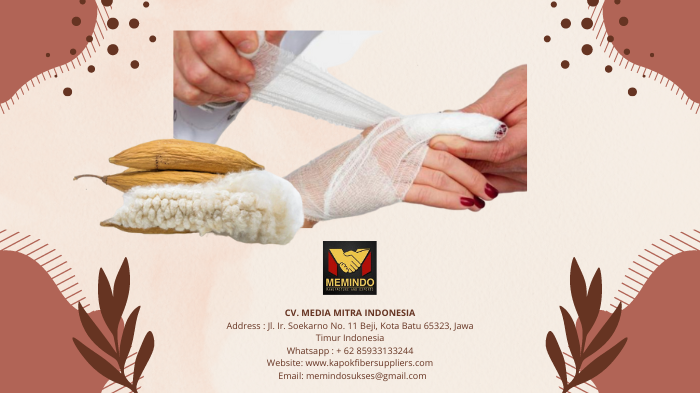In wound care, choosing the right dressing material is important to speed up the healing process and prevent infection. A dressing material that is not currently popular but can be used as a bandage dressing is kapok fiber. Although it is generally used as the main filling material for pillows and mattresses, kapok fiber has the potential to be an effective wound bandage, especially since kapok fiber is environmentally friendly because it comes directly from nature.
What is Kapok Fiber?
Kapok fiber is a fiber derived from the seeds of the kapok tree (Ceiba pentandra), kapok fiber also has moisture resistant, fast drying, resilient, and floating properties. The texture of kapok fiber is soft and lightweight, and has the ability to absorb moisture. In addition, the natural properties of kapok fiber make it an attractive choice for use on the skin.
Benefits of Kapok Fiber as a Wound Dressing
Kapok fiber has good absorbency, which helps to keep the wound area dry, which is essential to prevent the growth of bacteria and infection. In addition, kapok fiber also has soft and comfortable characteristics, so it will not cause irritation to the skin. This is very important, especially for sensitive wounds or moving areas of the body.
Good air circulation is also a major advantage of kapok fiber. Because, with good air circulation, the healing process can be carried out more quickly. If the wound gets good air circulation then it will be very helpful to speed up the wound healing process.
And, if you are someone who prefers environmentally friendly products, then kapok fiber wound dressings are the right choice. Because, the origin of kapok fiber is from nature without being processed with harmful chemicals. In fact, kapok fiber can also reduce the risk of allergic reactions or irritation caused by synthetic materials.
How to Use Kapok Fiber as a Wound Dressing
1. Wound Preparation: The first step is to make sure your wound has been well cleaned using an antiseptic first. The purpose of this step is to prevent infection.
2. Application of Kapok: Take enough kapok fiber to cover the wound. Don’t forget to make sure that the fibers are clean from dirt.
3. Covering the Wound: Carefully place the kapok fiber over the wound. If needed, use a plaster or bandage to keep the kapok in place.
4. Regular Replacement: If it feels damp, replace the kapok periodically. And be sure to check the progress of the wound every time you change the bandage.

